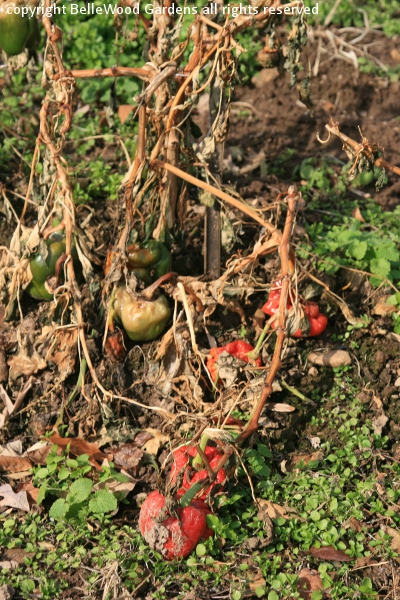
Sunday, 18 November 2012
The Almost Winter Vegetable Garden
After I go to the Sunday farmers market it's my habit to go visit Bea and Jerry. Sometimes I might pick up something at the market for them, but always it just nice to see my friends. Today was no different. A short drive to their house, a cup of coffee, something to eat for a late breakfast. And then, never a surprise, Jerry suggests that we go down to the garden. Understand that this garden once fed a family of six. Now that there's just the two of them at home the garden feeds an endless surge and flow of their friends.
Fine, you think to yourself, when it's summer and Jerry has planted 30 tomato plants. But it now happens to be mid-November. And while winter will not officially arrive until the solstice on December 21st we've had some pretty strong frosts. Down to the mid-20s Fahrenheit Jerry tells me.

Your garden may look like this, with peppers frozen to withered red nubbins clinging to collapsed stalks.
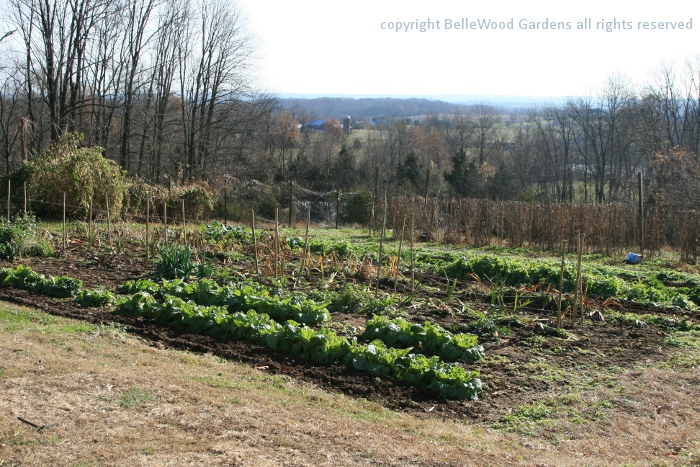
Jerry's garden, on the other hand, looks like this. How come? Because back in August he started planning for late autumn harvest,
sowing seeds of various cole crops and other vegetables that thrive on cooler temperatures. They sort of limped along inthe
higher temperatures, he told me, and then really took off and began to burgeon once temperatures dropped at summer's end.
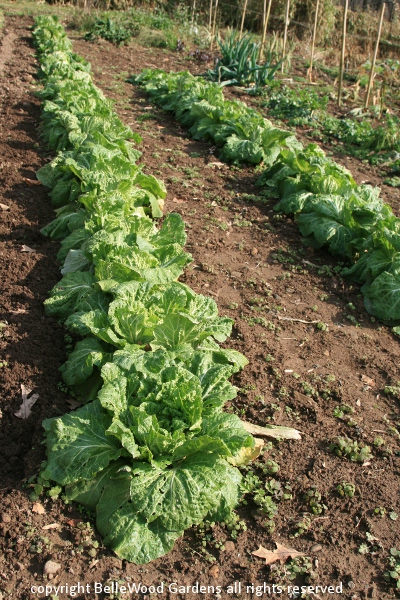
Gorgeous crisp Nappa cabbage. Sure, it gets frosted at night but then crisps right back up with the morning sun.
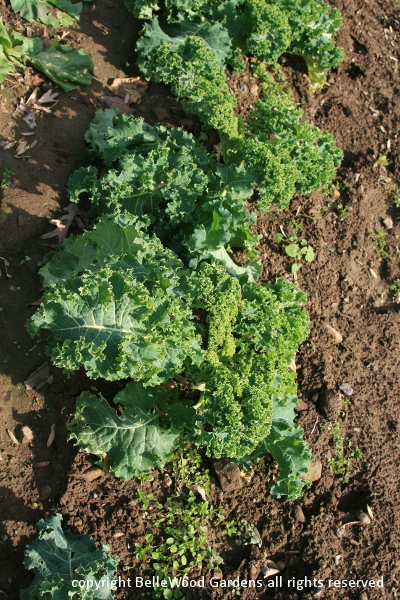
Kale becomes even sweeter, tastier after a frost. Excellent cooked in a slow braise with white beans.
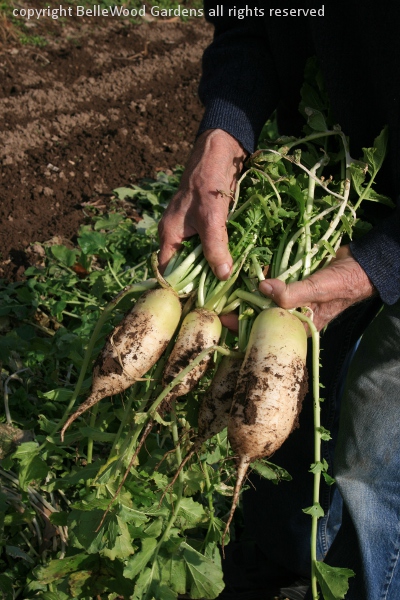
Daikon radishes. Yes, they'll grow in summer but the autumn harvest yields crisp sweet roots.
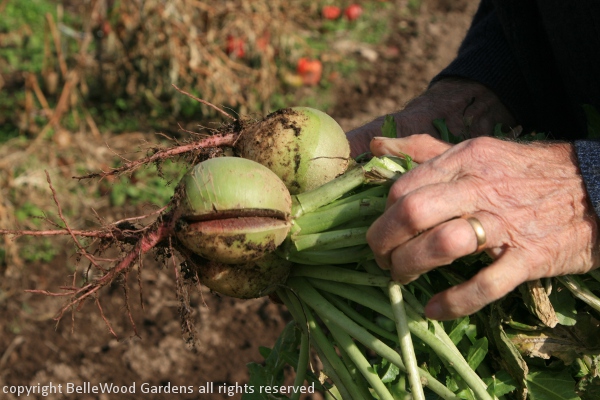
Japanese red heart radishes. Bigger than those little red midgets sliced in summer salads. These
fat globes are green on the outside with a eponymous red heart. Good fresh or as quick pickle.
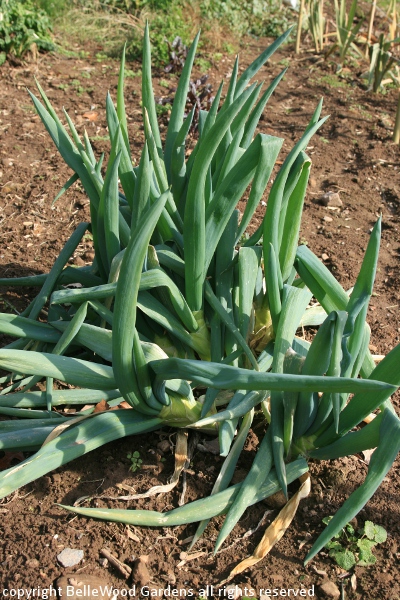
Bunching onions. Jerry thinks the seed might have come from Johnny's Selected Seeds
up in Albion, Maine, and seems to remember that they might winter over, too.
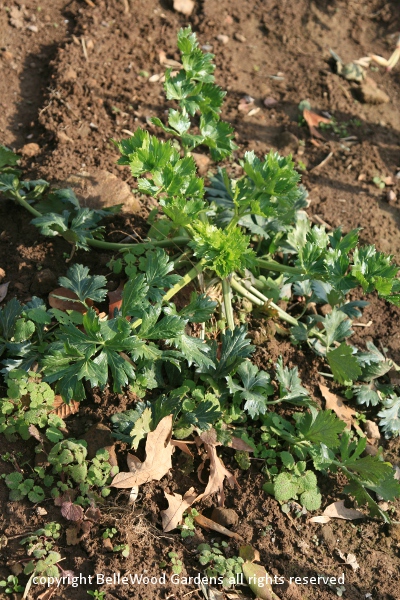
What's this spready celery-ish looking thing? You're close. It's celeriac, also known as
celery root. I like celery root remoulade from Julia Childs "The Art of French Cooking."
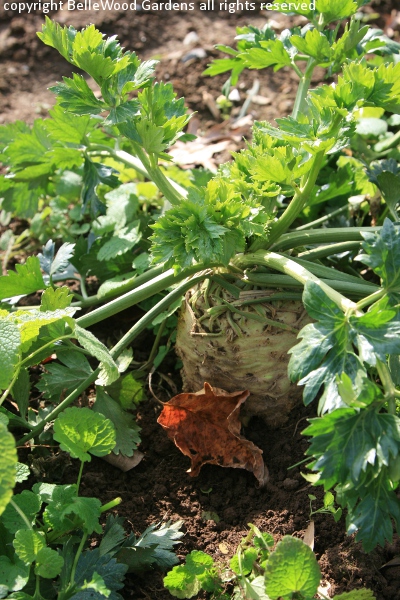
It's a lumpy, warty looking thing that errupts itself from the soil. The leaves
have a pleasant celery flavor and Jerry uses them in soups. Only if you grow
it yourself, as I've only ever seen the trimmed off knobs for sale in supermarkets.
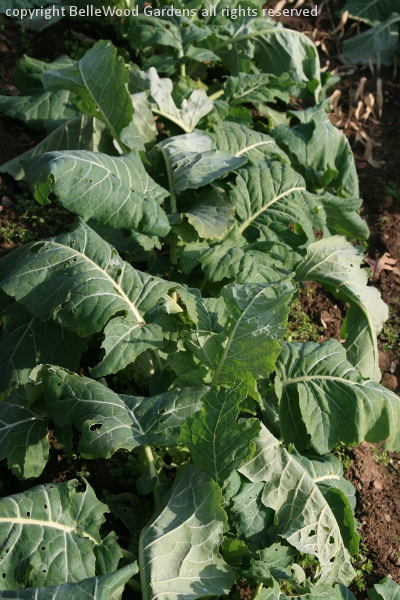
"Collards?" I asked. "No," said Jerry, "kohlrabi." But I'll bet you could cook the greens
just like collards, long and slow with some bacon and make a flavorful pot likker for corn bread.

It's the tender, mild bulb for which the vegetable is known. It also come in purple. And the little leaves
are tender and sweet, something to enliven a winter salad. By now my hands are full with fresh pulled
produce - daikon and red heart radishes, a Nappa cabbage, kohlrabi, a celery knob. What fun this is!
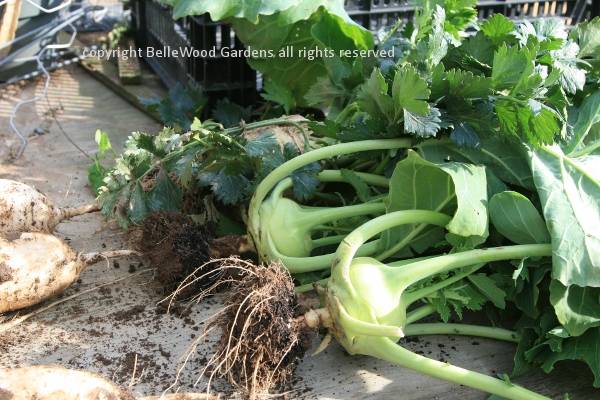
.

Fresh from the earth, the soil clings to them.
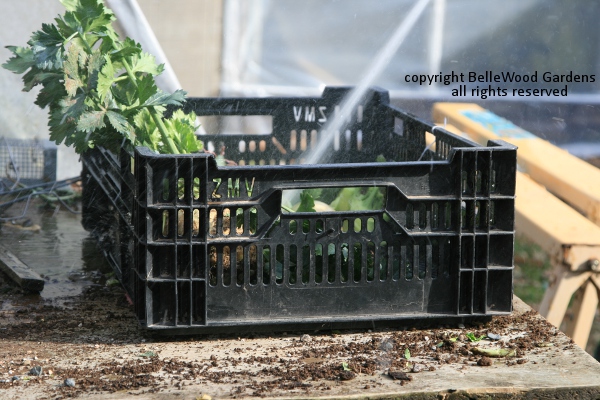
Jerry has a washing station set up. He directs me to trim off the tops, except for the celery knob, and
all the fibrous little roots. Set in a sturdy plastic crate he directs a stream of water over the vegetables.
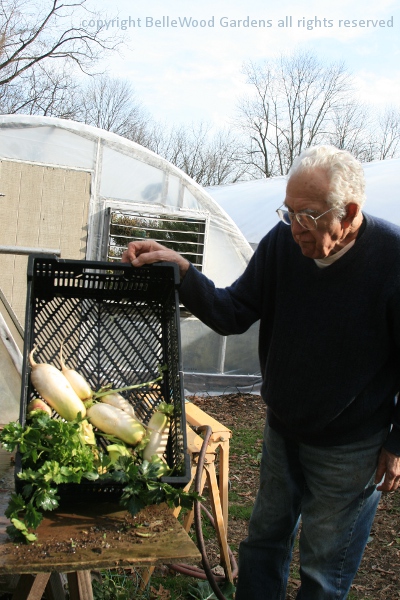
Beautiful vegetables from the (almost) winter garden, a fresh harvest for the Thanksgiving table.
Wonderful, both harvest, and even more wonderful, friends such as Bea and Jerry.